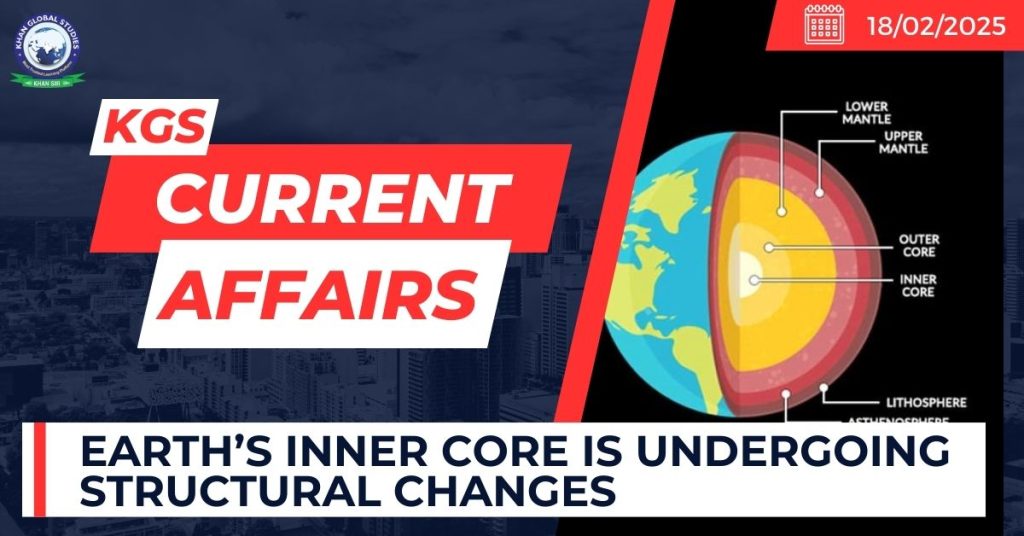Context:
A recent study revealed that Earth’s inner core may be undergoing structural changes, affecting its rotation and potentially altering the length of a day.
More on the News:

The study, published in Nature Geoscience, challenges earlier ideas that change in the inner core only over geological timescales.
Previous research shows that the inner core doesn’t rotate at the same speed as the rest of the planet.
- It used to rotate faster but has been slowing down since 2010.
Methodology Adopted:
- The researchers studied seismic waves from earthquakes, which travel through Earth’s internal layers and return to the surface.
- These waves can help scientists see into the Earth’s interior.
- The team analyzed seismic data from 121 repeating earthquakes recorded between 1991 and 2024 near Antarctica’s South Sandwich Islands, which provided a unique opportunity to detect subtle changes in seismic wave behavior.
- One dataset revealed unusual seismic wave properties, leading researchers to uncover signs of additional physical processes occurring within the inner core.
Key Findings of the Study:
This study suggests interactions between the inner and outer core are causing changes on a human timescale.
- The Earth consists of layers—mantle, molten outer core, and solid inner core.
The outer core is known to be turbulent, its ability to influence the inner core was not thought to happen quickly enough to be observable in human timescales.
Researchers discovered evidence suggesting that the inner core’s independent rotation is slowing, indicating a more complex interplay between the inner and outer core than previously understood.
The researchers hypothesize that the inner core’s surface may be undergoing structural changes due to the dynamic interaction with the outer core.
This could involve viscous deformation, where materials flow under pressure, similar to how honey moves.
The study suggests the near-surface of the inner core is not as rigid as once believed and is instead responding dynamically to the outer’s movements.
Significance of the Study:
- This finding could lead to a better understanding of how Earth’s internal forces affect phenomena like the planet’s rotation and day length.
- The study highlights the influence of the molten outer core on the solid inner core, with potential implications for both geophysics and the understanding of Earth’s long-term behaviour.

